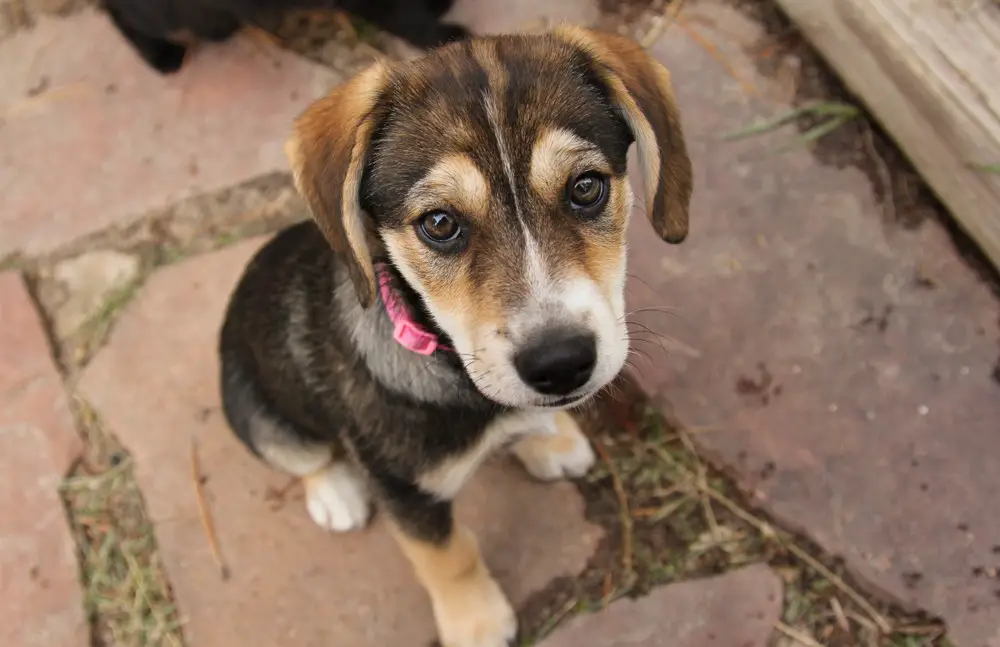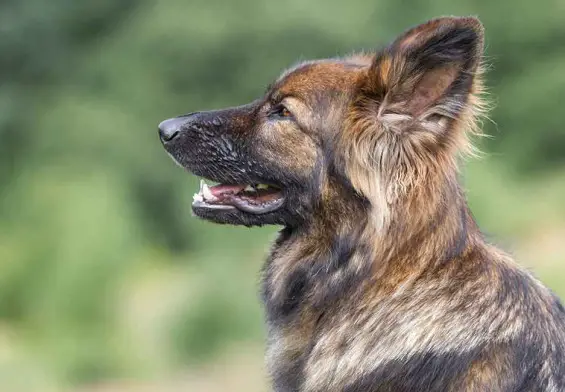Husky Beagle Mix Guide (AKA Beaski)
Bred from a Siberian Husky and Beagle, the Beaski hybrid was first introduced in the 1990s, and most people kept the dog for companionship and hunting. They have a loveable personality; they tend to be friendly, intelligent, and active. The Beaski could be the dog for your family if you like the outdoors.
Due to their activity, the Beaski will require a lot of yours too. They enjoy having fun and will appreciate a big family with plenty of time for it. Are you thinking of getting this dog? You will need to keep some essential information in mind to understand them and thus provide better care.
Beaski Puppy
There is little information about the Beaski’s history; however, it is believed that they were bred in the United States around the 1990s. The hybrid parents consisted of a Beagle and Siberian Husky, and both are adorable, cuddly, and loyal dogs.
The Siberian Husky’s history traces to Siberia, where it was used to pull sleds and thus, as a working breed. The Beagle’s history traces to the 1300s. Like the Husky, it is believed to have provided hunting companionship and was also used as a working dog.
Like most hybrids, the Beaski’s trait inheritance is not easily predictable. They can have both of their parents’ traits or take after either side of the family. Nevertheless, you will love them for their gentleness, energy, and affection—they are lovely pets.
How much do they cost?
Depending on where you purchase a Beaski, the dog’s price could range from $100 to $1,500. Your preference will take the day. For an affordable option, you can get one of these adorable pups from a shelter via adoption. Sad as it is, most of them find their way to shelters.
The price of adoption may not be a one-time deal. Consider that your puppy could fall ill easily since you may not have much of their history. They can also take time to get used to their new environments and will require more attention. Nevertheless, dogs require all the love you can give.
If you feel for those little guys alone in shelters, you can save a puppy and train them in a new home. With time, they will hopefully love their surroundings are spark with activity, love, and happiness. If you can afford to spend more, however, and are perhaps wary about their history, then you have another option.
You can spend a range of $800 to $1,500 to purchase a Beaski from a trusted breeder. With them, you can get accurate information about their history and families—this may seem simple, but it helps manage their healths, temperature, general activity, and response to commands.
Temperament and Intelligence
You may love Beaski’s character. The dog is not only intelligent but is also gentle and generally looks adorable. You may not find them aggressive, despite their protective instinct—they are friendly and cohabitate peacefully with other pets and dogs. They enjoy the outdoors and often burst with activity since they were first bred for companionship and hunting.
Unlike most other dogs, the Beaski do not easily get anxious or lonely—they are okay with time alone. However, they will need regular activity to avoid boredom and eventual anxiety; it is good to spend time with them whenever possible. Should they get irritated, they can be destructive.
While they are not easily aggressive or hostile to other dogs, the Beaski can get territorial. It is, however, expected of most dogs. Therefore, they are not always open to the idea of strangers. They also tend to be stubborn, causing training challenges. Do not be discouraged; there is plenty of love you can still afford them.
These dogs are gentle and well-natured. They please more than they disappoint, and their quirkiness adds to the fun of being around them—they will take up new tricks and learn behaviors fast and intelligently. They love the outdoors and do not mind cold weather.
Is Beaski good for a family?
Many families keep Beaski; it is good with everyone. However, if they are going to play with or around kids, you may want to ensure that you keep a close eye. Children can get overly obtrusive, and since these are sensitive dogs, they may not take well to rough play. As noted, they are not aggressive, but they can turn timid.
Thanks to their protective nature, you may love keeping Beaskis as guard dogs. As soon as they learn something new, they will be running around, rolling all over, trying different games, and appealing company. You can try out fetch with them, and if possible, tug-of-war would do.
Considering that they are energetic and active, you may want to ensure that your Beaski is enclosed in a high-fenced compound or yard. Some people keep them in their apartments, which is okay, but most would prefer to get them a cozy, sufficient space, such as a dog park.
How does Beaski cohabitate with other pets?
Their personality allows Beaski to get along well with other dogs. They may also come to love the company of smaller pets; if you have rabbits or cats, then with earlier training, they will not have a problem playing with them or making friends. Remember, however, the time factor.
It is also in a Beaski’s nature to hunt, following that the Beagle, which formed one of its old parents, was mostly used in hunting expeditions. Therefore, you should watch that they do not go after chipmunks, squirrels, and other small animals; early training helps get them accustomed to their environments and other creatures. Teach them to love and appreciate company.
As we have noted, the Beaski is a somewhat territorial dog. They do not easily take well to strangers or new faces. Whenever they cannot take it, they tend to bark loudly; however, they are unlikely to bite—remember that Beaskis are not aggressive; so, they instead warn you of someone or something new and out of the ordinary.
Caring for your dog
Understanding the Beaski’s character is a part of what you should have in mind before purchasing one. You may also want to ensure that they get the best and most suitable diet and training for their ultimate good health. Here, you can tell whether or not you can manage this dog as a pet. I believe that if you have gotten this far, then you will love them.
Besides watching their food and diet, you may want to ensure they exercise and train at least every day. Proper grooming is essential and so is information on diseases they can suffer.
- Food and diet
Their diet should suit these dogs’ high activity and be just right for their medium sizes. A recommended diet would be high protein foods that have healthy levels of fiber and fat. Before offering them something new and for better ideas on what best could suit them, you can get more recommendations from a vet.
What you can get them in the meantime, however, with their nutrition in mind, can include supplements not limited to antioxidants, probiotics, and omega fatty acids. These will improve their digestive and immune systems and even promote the quality of their coats and skins. You may also want to check more minerals and vitamins into a Beaski’s meal for better overall health.
Canned food is okay; nonetheless, your dog may love dry or raw more and provide higher nutritional value. Unhealthy fats, sugars, and carbohydrates are some of the things you may want to avoid; therefore, go for foods that do not have them or contain them in only low levels.
- Exercise
While they are active, Beaskis need only reasonable amounts of daily exercise. Whenever you have the time, go out with them for a walk of up to 30 minutes, then play in the backyard, and your dog will be happy. It is also a good idea to give them something to do since they are work dogs.
They enjoy challenges and puzzles; therefore, get them something that can test their reasoning. Over time, they could get sharper and be able to do more with focus. Learning is an integral part of growth, and it goes well along with playing. That is not all, however.
You may also want to ensure that your dog runs enough whenever you are out training, exercising, walking, or specifically playing. Their active minds will enjoy remaining engaged, as boredom could lead them to negative behaviors and destructions, which include barking, scratching, digging, and even chewing.
They will enjoy some activities that can feel a little strenuous, such as bike riding and hiking. Considering that their old parents were kept for hunting and working, Beaskis can take a distance’s challenge. Since they are okay in cool conditions, it is good to keep a close eye on their temperatures whenever it is humid or hot so that they do not overheat.
- Training
The Beaski can be a little challenging when it comes to training. They are intelligent and love learning new stuff and tricks, which makes things easy. However, their stubborn personality can hinder smooth training. What do you do to ensure you do not end a session having gained little?
Patience is one of the tricks to winning Beaskis over. You may have to repeat the activity several times and remain consistent. Over time, they can lessen themselves and learn.
Another challenge you may face is with punishing or handling them discomfortingly, in the case of children. As we have noted, they can be sensitive and, when punished, shy into timidity. Sometimes, they can turn destructive. Therefore, to tune their behaviors, potty train, or teach them obedience, you will have to employ a positive approach.
- Grooming
Beaskis are different in their adaptations of their parent features. Some take after both sides of the mix, while others take either the Beagle or the Husky sides—this could mean varied maintenance of their fur. Huskies shed their fur more than Beagles and will, therefore, need plenty of brushing. On the other hand, the latter need only be brushed every once in a while—their fur is shorter.
You can also bathe them as many times as would be suitable for their parent species. When you are at it, you may want to check and ensure that their ears are clean—do it at least once every week and remember to use only washes recommended by a vet. Like the rest of them, clean their teeth whenever possible throughout the week.
Wouldn’t they look neater and be safer with trimmed nails? Indeed—maintain them as much as possible. Long nails will click on the floor and indicate that it is about time you did something. Dogs that spend plenty of time outdoors have shorter nails and thus take the hassle of trimming them often.
- Health
While interbreeding the Beaski’s parents was meant to develop a better and healthier species, there is no certainty about lessened chances of illness with hybrids. Beaski’s, however, do not get sick often. When they do, they may experience the following diseases:
Hip dysplasia, cataracts, Entropion, epilepsy, pulmonic stenosis, congenital heart defect, and even interverbal disc disease. It is good to pay a regular visit to the vet and have them checked out. Some of these issues start small and, over time, can threaten your pet’s life.
Bottom Line
A Beaski is a lovely and friendly dog—you may love how warm your family will feel with one of these adorable pets. They are full of energy, enthusiasm and life! They always want to be around, doing something. So, if you are an outdoor family, your Beaski will have a good time.
There is plenty of more information about Beaski hybrids. I hope we have covered most of the essential parts, helped you with a decision, enlightened you, or introduced you to a breed you think you and your family will love. Enjoy your time with your Beaski!





